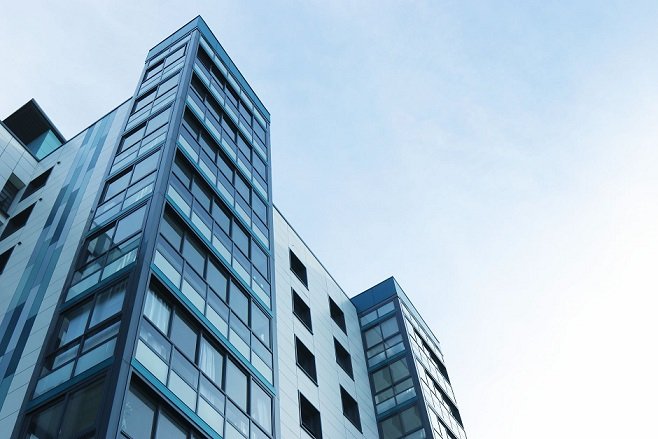
In the world of real estate, first impressions matter immensely. A potential buyer’s decision to explore a property often hinges on the visual allure of its online images. High Dynamic Range (HDR) photography has emerged as a game-changer in this industry, enabling real estate professionals to showcase properties in the most captivating and accurate light. In this comprehensive review article, we delve into the intricacies of HDR photography for real estate, discussing its benefits, techniques, tools, and the future it holds in this ever-evolving field.
Understanding HDR Photography
What is HDR Photography?
HDR photography, short for High Dynamic Range photography, is a technique that aims to capture a wider range of luminosity in a single image. It achieves this by merging multiple photographs taken at varying exposure levels, resulting in a final image that showcases both bright highlights and deep shadows in a balanced and realistic manner.
Why HDR Photography for Real Estate?
The real estate market is fiercely competitive, and property listings must stand out to attract potential buyers. HDR photography addresses this challenge by presenting properties in their best light, both figuratively and literally. Here are some key reasons why HDR photography is crucial for real estate:
Enhanced Visual Appeal
HDR images are visually striking. They make properties appear more vibrant, inviting, and true to life. The improved visual appeal can pique the interest of potential buyers and leave a lasting impression.
Accurate Representation
Real estate is a significant investment, and buyers expect accurate depictions of properties. HDR photography ensures that lighting conditions, colors, and details are faithfully represented, reducing the risk of disappointment during property visits.
Competitive Advantage
In a crowded real estate market, having high-quality HDR images can give a listing a distinct advantage. Properties with stunning visuals are more likely to receive attention from buyers and agents.
The Art of HDR Photography
Capturing the Right Images
To create compelling HDR photographs for real estate, it’s crucial to start with well-captured source images. Here are some essential considerations:
Bracketing
Bracketing involves taking a series of images at different exposure levels, typically three to five shots. This range ensures that you capture details in both highlights and shadows.
Tripod Use
Using a tripod is essential for maintaining consistent framing between shots. It eliminates the risk of misalignment during the merging process.
Manual Settings
Photographers often opt for manual settings to control exposure, aperture, and ISO to ensure consistent quality across bracketed shots.
HDR Software and Post-Processing
Once you have captured the necessary bracketed images, the next step is to merge them using dedicated HDR software. There are various software options available, each with its own features and capabilities. Popular choices include Adobe Photoshop, Photomatix, and Aurora HDR. Post-processing allows you to fine-tune the final image, adjusting exposure, contrast, color balance, and other factors to achieve the desired look.
Maintaining Realism
While HDR images can be visually stunning, it’s essential to strike a balance between enhancing the image’s appeal and maintaining realism. Overly processed HDR images can appear unnatural and deter potential buyers. Skilled photographers use HDR techniques to enhance, not distort, the property’s true characteristics.
Advantages of HDR Photography for Real Estate
Highlighting Property Features
HDR photography excels at highlighting key features of a property. Whether it’s intricate architectural details, stunning landscapes, or luxurious interiors, HDR images make these aspects pop, drawing viewers’ attention.
Creating a Welcoming Atmosphere
One of the primary goals of real estate photography is to help potential buyers envision themselves living in the property. HDR photography can create a warm and inviting atmosphere, making it easier for viewers to connect with the space emotionally.
Increased Online Engagement
In the digital age, property listings are often the first point of contact between buyers and sellers. High-quality HDR images encourage longer visits to online listings and increase the likelihood of inquiries.
Faster Sales
HDR photography for real estate has been linked to faster property sales. Engaging images capture buyers’ interest more effectively, reducing the time properties spend on the market.
Challenges and Solutions in HDR Real Estate Photography
Managing Time Constraints
Real estate photography often operates on tight schedules. To address this challenge, photographers can use HDR techniques efficiently by pre-planning the shoot, automating processes, and working with experienced assistants.
Dealing with Mixed Lighting
Properties may have various light sources, such as natural light, artificial lighting, and even candlelight in some cases. HDR photography can help balance these diverse light sources, but photographers must exercise care during post-processing to avoid unnatural color casts.
Image Quality vs. File Size
HDR images tend to be larger in file size due to the multiple exposures involved. To ensure that images load quickly on websites and don’t overwhelm storage, photographers can optimize images for web use while preserving quality.
Tools of the Trade
5.1 Camera Equipment
Investing in the right camera equipment is essential for achieving high-quality HDR images. Full-frame DSLR cameras with wide-angle lenses are popular choices among real estate photographers.
Tripods and Remote Triggers
Stability is key in real estate photography, and tripods, along with remote triggers, are indispensable tools for capturing sharp bracketed images.
HDR Software
Selecting the right HDR software is crucial for efficient post-processing. As technology evolves, new software solutions offer advanced features and streamlined workflows.
Future Trends in HDR Real Estate Photography
Integration with Virtual Reality (VR)
The integration of HDR photography with VR technology is an exciting frontier in real estate marketing. This allows potential buyers to take immersive virtual tours of properties, providing an even more realistic experience.
AI and Automation
Artificial intelligence and automation are set to play a more significant role in real estate photography. These technologies can streamline the HDR photography process, making it more accessible to a broader range of professionals.
Enhanced Augmented Reality (AR) Listings
AR overlays on property images, made possible by HDR photography, can provide buyers with valuable information such as room dimensions, nearby amenities, and even potential renovation ideas.
Conclusion
HDR photography for real estate is a powerful tool that can significantly enhance property listings, attracting more potential buyers and speeding up the sales process. By capturing the essence of a property with stunning visuals, HDR photography helps buyers see the true potential of a space. As technology continues to advance, we can expect even more exciting developments in the realm of HDR real estate photography, making it an essential skill for real estate professionals in the digital age. So, whether you’re a real estate agent, photographer, or homeowner looking to sell, embracing HDR photography is a step in the right direction to maximize the visual impact of your property listings.





